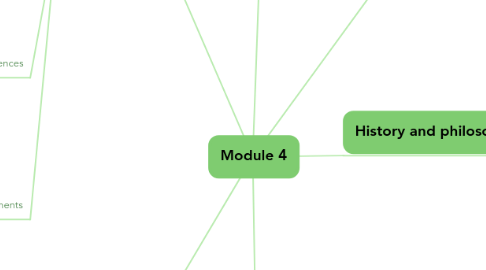
1. Exercise, Nutrition & health
1.1. energy at rest and during exercise
1.2. fundamental physiological processes involved in exercise sport and peformance
1.3. body's nutrition demands when exercising
1.3.1. carbohydrates, proteins to recover tissue lost
1.4. health consequences of unbalance diet
1.4.1. development of diseases
1.4.2. body weaknesses
1.5. psychological aspects related to nutrition and exercise
1.5.1. benefits of exercise,
1.5.2. synthesis of macro-nutrients do obtain energy
1.6. douglas bags and data analysis
1.6.1. mathematics calculations, used of word, excels, statics and writing of report
1.6.2. anthropometry measurements
2. Nutrition
2.1. anthropometry
2.1.1. BMI,
2.1.2. Upper middle circumference
2.1.3. skilfolders
2.1.4. data analysis, scientist literature writing
2.1.5. statistics
2.2. macronutrients
2.2.1. protein, carbohydrates
2.2.2. lipids, fibre
2.3. micronutriens
2.3.1. minerals, vitamins
2.4. amino acids
2.5. ethics
2.6. the impact of physiology and biochemistry in the filed of nutrition
2.6.1. chemical reactions, to achieve absorption
2.6.2. physiology stage of the different organs in the body
2.7. the nutrients need at different stages of life
2.7.1. fetus, infant, toddlers
2.7.2. school age, adolescents,
2.7.3. middle age, young adult, older adult
2.8. water as essential nutrient
2.9. dietary references
2.9.1. lower references nutrition 2.5%
2.9.2. estimate intake references 50% vs 50% of the populations adequate and not adequate
2.9.3. references nutrition intake cover 97.5% of the population
2.9.4. quantities are in grams, milligrams, micro-grams
2.10. food assesments
2.10.1. retrospective, 24hrs recalled
2.10.2. food questionaries
2.10.3. prospective, under observation study
3. Physiology
3.1. feedback loops
3.2. physiology systems changes
3.3. gain anatomy lecterature
3.4. describe body systems vs communication
3.5. familiarized with the four tissue systems
3.5.1. epithelial, connective
3.5.2. nervous muscles
3.6. extracellular communication systems
3.6.1. nervous, endocrine, immune
3.7. organs that fed and remove toxins to maintain homeostasis
3.7.1. cardiovascular, respiratory
3.7.2. urinary, digestive
3.8. the network of the three extra-cellular systems that control hypothalamus, pituitary, gonads,
3.8.1. nervous, endocrine, immune
3.8.2. to allow fertilization
3.9. lab practical to look up open heart of a sheep
3.9.1. examinations arteries, valves, veins
3.9.2. atriums and ventricules
3.10. lab piratical
3.10.1. douglas bags
3.10.1.1. data analysis
3.10.1.2. mathematics calculations, used of excel, work and writing scientist literature
4. Biology
4.1. cell history, theory, evolution
4.2. development, classification
4.2.1. three kingdoms
4.3. communication, structure, DNA , genetic material inherited, cells adaptation, environment
4.3.1. cell signaling
4.3.2. cells division
4.3.3. different types of cells in the body
4.4. lab practicals
4.4.1. pi petting, spectrophemetry
4.4.2. microscopy
4.4.3. liver, onion, fungi cells observations
4.4.4. solutions, reagents, glass lab wear handling
4.5. linked knowledge and apply it to other modules
5. Biochemistry
5.1. lab skills
5.1.1. pi petting, reagents measurements
5.1.2. spectrophotrometry, growth cultures
5.1.3. data analisys
5.1.3.1. Microsoft excel
5.1.3.2. microsoft word
5.1.3.3. matematical calculations
5.1.4. DNA, gel electrophoroses
5.1.5. preparation of solutions
5.2. the synthesis of DNA, types of RNA
5.2.1. enzymes, co-factors,
5.2.2. ions, anions,
5.2.3. DNA discovering and history
5.2.4. translations, replications
5.2.5. structure
5.2.6. cell structure and its genetic material
5.3. interaction of bio-molecules in chemical reactions
5.3.1. proteins, carbohydrates
5.3.2. lipids, nucleic acid
5.3.3. drugs, endogenous, exogenous
5.3.4. monosaccharides, aminoacids
5.4. critical thinking, interpretations of data and scientific literature
5.5. biochemistry and biochemical relationship with diseases in the world
5.5.1. genetic mutations, and inherited of diseases
5.5.2. environmental impact in the cells
5.5.3. mutations due to chemicals and drugs
5.5.4. mutations due to malnutrition or overnutrition
6. History and philosophy
6.1. history of scientist
6.1.1. experiments, evolutions
6.1.2. experiments with innovations of machinery and elements in medicine
6.1.3. discovery of the bacteria in a lab
6.1.4. network of scientist towards world findings
6.1.5. data analysis and interpretations of scientific methods
6.1.6. scientists contribution to better the world in areas of health and life quality with development of machinery and industrial achievements
6.2. lab skills
6.2.1. designing, and developments, interpretation of data
6.2.1.1. mathematics calculations
6.2.1.2. Microsoft word, excel
6.2.1.3. statistics interpretation
6.2.1.4. writing scientist literature
6.3. ethics
6.3.1. relationship with the science literature
6.3.2. ethics apply to literature publish on media
6.4. interpretation of scientist literature
6.4.1. applying statistics
